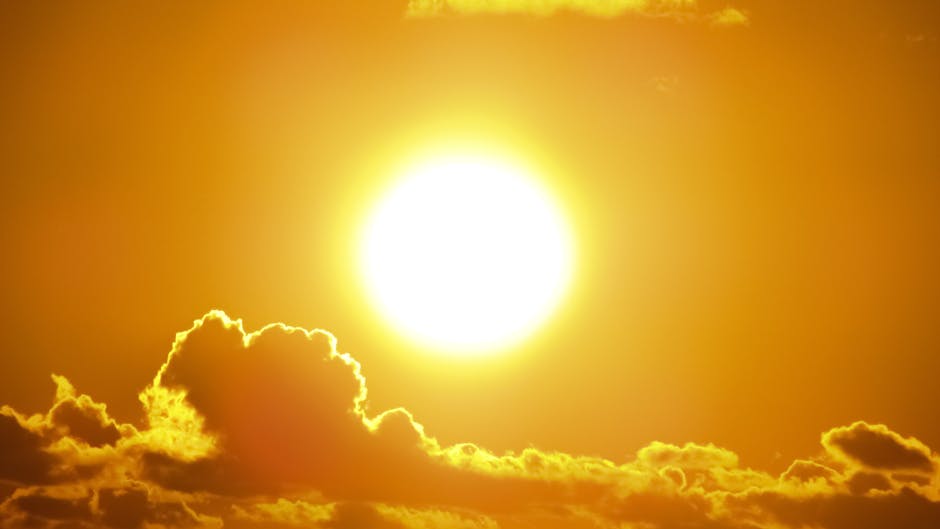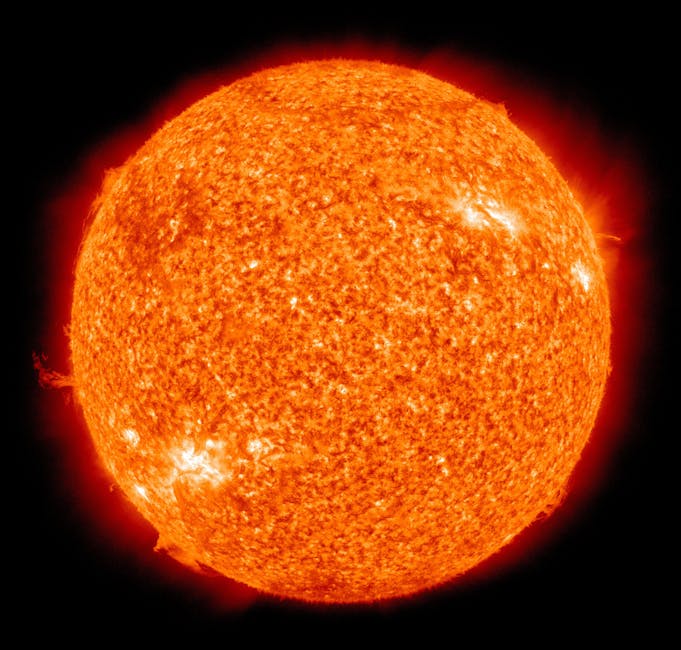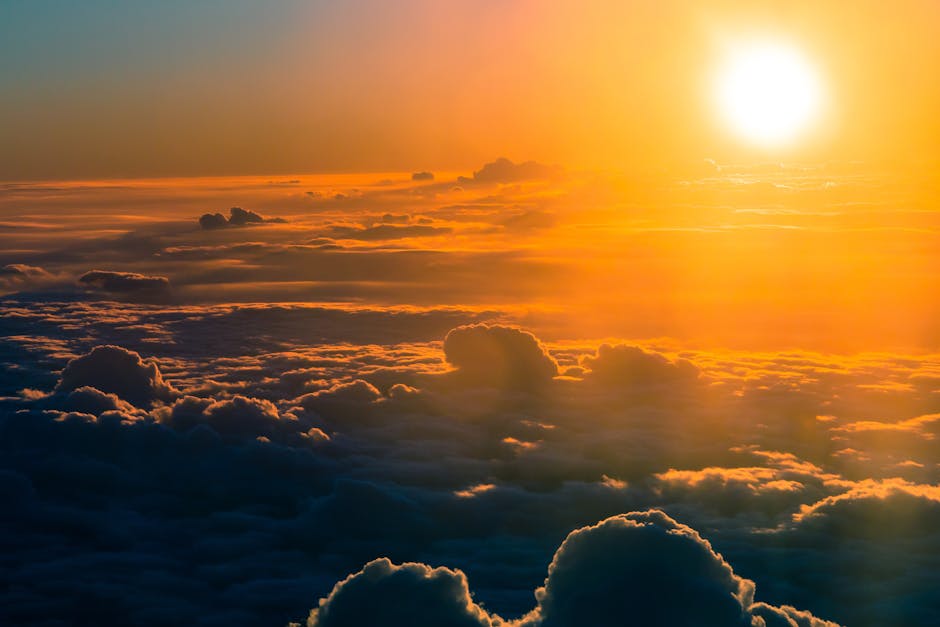Have you ever stood in awe of the sun’s radiant glow, or marveled at the moon’s ethereal luminescence? Throughout history, poets have been captivated by these celestial bodies, weaving their beauty and power into captivating verses. Poems about the sun and moon are a timeless tapestry, capturing the awe, mystery, and significance of these celestial wonders.
Each poem explores the unique characteristics of its subject, from the sun’s blinding brilliance to the moon’s gentle luminescence. Poets delve into the significance these celestial bodies hold in cultural narratives, religious beliefs, and personal experiences.
Through their words, poets convey the profound impact these celestial entities have on human emotions, inspiring awe, reflection, and a sense of wonder.
27 Celestial Poems about the Sun and Moon
Solar Flare
Blazing fiery whispers in the morning sky
A new dawn breaks, and with it, a sigh
The sun’s awakening, a burst of light
Banishing the darkness, a celestial sight
Lunar Lullaby
Silver mist upon my face
A gentle rocking, a soothing pace
The moon’s soft whispers, a peaceful hush
As the world slows down, in a lunar rush
Sunrise Serenade
The morning sun, a fiery lover’s call
A symphony of light, upon the wall
The stars fade out, as day takes stage
A celestial dance, in a sun-kissed age
Moonlit Dreams
In the silence, a silver glow
A beacon in the darkness, as I grow
The moon’s soft light, upon my face
Illuminating paths, in a lunar embrace
Auroral Bloom
At dawn’s break, a colorful display
A celestial tapestry, in shimmering gray
The sun’s awakening, a vibrant hue
A kaleidoscope, of light anew
Midnight Sky
Amidst the darkness, a twinkling sea
A celestial showcase, of wonder and glee
The stars up high, a diamond’s shine
A lunar lullaby, in a midnight divine
Solar Winds
The sun’s warm touch, upon my skin
A gentle breeze, that soothes within
The stars align, in a celestial dance
As the sun’s warm winds, take a cosmic prance
The Moon’s Soft Sway
In the stillness, a lunar sigh
A gentle rocking, as the stars go by
The moon’s soft whispers, a peaceful hue
As the world slows down, in a lunar sway anew
Enjoying these poems? You can also create your own poems with our Advanced AI Poem Generator.
Auroral Awakening
The sun rises slow and paints the sky,
A fiery hue that catches the eye,
The stars fade out, their twinkling light,
As morning brings new life to sight.
Moonlit Whispers
The moon’s soft beam upon my face,
Illuminates a peaceful place,
The world is hushed, a gentle sleep,
As lunar wisdom starts to seep.
Solar Flare
A burst of energy, a fiery ball,
Illuminating all, standing tall,
The sun’s fierce passion, wild and free,
A dance of light, for you and me.
Lunar Lullaby
Softly shines the moon’s pale face,
A soothing balm for a troubled space,
Guiding us through life’s darkest night,
To a place of peace, and gentle light.
Stellar Dreams
As I lay on my back, I stare,
Up at the stars, beyond compare,
A celestial canvas, vast and wide,
A twinkling tapestry, where dreams reside.
Moonbeam Magic
A beam of light, a gentle ray,
Illuminates the path I sway,
The moon’s soft whisper, a guiding voice,
Leads me through life’s uncertain choice.
Solar Splash
A splash of color, a vibrant hue,
The sun’s warm touch, upon me anew,
Refreshing and revitalizing too,
A burst of energy, for me and you.
Astral Odyssey
Take me on a journey, through the night,
Through stars and planets, a celestial sight,
Take me on a ride, where dreams unfold,
And the universe, my spirit mold.
Luna’s Lament
Oh, moon of beauty, how you shine,
A beacon in the dark of mine,
A guiding light, through life’s uncertain sea,
A constant friend, for you and me.
Sunrise Serenade
The morning sun, a sweet delight,
Awakens life, with its golden light,
A symphony, of birds and breeze,
A serenade, for you and me.
Moon’s Gentle Touch
A gentle touch, a soothing hand,
The moon’s soft whisper, across this land,
A calming balm, for a troubled mind,
A peaceful refuge, left behind.
Cosmic Dance
The stars and planets, in a cosmic sway,
A celestial ballet, to the rhythm of the day,
A dance of light, of movement and of sound,
A symphony, that echoes all around.
Solar Soliloquy
Oh, sun, you fiery ball of light,
How you illuminate, the dark of night,
A burst of energy, a shining ray,
A symbol of life, in a celestial way.
Lunar Landscape
A barren landscape, of gray and white,
The moon’s pale light, casting a lonely sight,
A desolate beauty, of rocks and sand,
A lunar landscape, where dreams expand.
Stardust Memories
Memories of love, of laughter and of tears,
Like stardust, scattered through the years,
A celestial tapestry, of moments shared,
A legacy, that will forever be spared.
Moon’s Silent Song
A silent song, of gentle hush,
The moon’s soft whisper, in a soothing rush,
A lullaby, of peace and rest,
A celestial melody, that’s forever best.
Solar Flare-Up
A burst of energy, a sudden flash,
The sun’s fierce passion, in a solar clash,
A dance of light, of movement and of might,
A celestial display, of pure delight.
Solar Splendor
The sun, a fiery ball of light, oh so divine,
Illuminates our world, and makes it shine.
With warmth upon our skin, and joy in our hearts,
It chases all our fears, and keeps us from the dark.
Its rays, like golden threads, weave a tapestry so fine,
A masterpiece of beauty, for all to divine.
Moon of Dreams
When nighttime whispers secrets, and the world is still,
The moon, a gentle mistress, listens to its will.
With silvery light, she illuminates our way,
And guides us through the darkness, night’s unsure gray.
Her phases mark the passage of time, a waning stream,
A cyclical reminder, of life’s eternal dream.
Sun’s Vernal Vigor
As spring awakens, and the world’s clothed in green,
The sun, a vibrant artist, paints a masterpiece serene.
With colors bright, and hues so bold,
It brings forth life, and banishes the cold.
The breeze, like whispers of delight, carries scents so sweet,
As petals unfurl, and nature’s beauty is hard to beat.
Moon’s Mystical Tides
Like a mystic singer, the moon serenades the sea,
With enchanting melodies, of a harmony so free.
The waves, like rhythms, ebb and flow, a symphony divine,
As the tides, a testament, to the moon’s celestial twin.
With secrets kept, and mysteries untold,
The ocean’s majesty, the moon’s mystic hold.
Stellar Lullaby
As stars appear, like diamonds in the evening’s vault,
The moon, a guiding music, sings a lullaby so soft and faultless.
Her silvery clarion, a gentle reminder, of the sleep,
That brings solace, and peace, to weary souls that creep.
In this cosmic lullaby, we find our peaceful nest,
Where worries fade, and dreams are born, and rest.
Orb of Light
In cosmic dance, the sun, a shining orb of might,
Dances with the planets, through the celestial light.
With radiant beauty, it draws us near,
To bask in its warmth, and banish all our fears.
A symbol of hope, and love’s pure fire,
The sun’s bright beacon, inspires, and reaches higher.
Silvery Glow
As moonbeams filter, through the window’s lace,
A silvery glow, illuminates the space.
With gentle whispers, of a love so true,
The moon’s soft radiance, heartbeats anew.
In this ethereal light, we find our peaceful nest,
Where love and dreams, forever find their rest.
Sun’s Wildflowers
Like the sun’s wildflowers, we bloom with glee,
Unfurl our petals, in radiance, and ecstasy.
With colors vibrant, and scents so sweet,
We spread our beauty, for all to greet.
Like the sun’s warm breath, nourishes our growth,
We drink in life’s nectar, and seize the cosmic faith.
Night’s Luminous Waltz
In starry darkness, the moon, a waltzing queen,
Dances with the stars, to a celestial tune serene.
With steps so light, she glides across the floor,
As constellations spin, to a rhythm evermore.
Like a mystical ballet, the moon, in gentle sway,
Leads us through the night, to a world of enchantment’s play.
Ember’s Glow
Like a smoldering ember, the sun’s warm light stays strong,
Even after sunset, in memories that don’t belong.
It inspires our passions, as artistry unfolds,
Guiding our creativity, with fires that ne’er grow cold.
As we weave our stories, of love and life’s design,
The sun’s ember glows, like a beacon of divine.
Celestial Dance
In the grand theater of the sky,
The sun and moon perform their dance,
A ballet of light and dark,
A cosmic romance.
The sun, a golden dancer,
Leaps and twirls in radiant joy,
Casting shadows on the earth,
As daylight sings and toys.
Then comes the moon, a silent partner,
In a gown of silver radiance,
Gliding slow across the stage,
With a tranquil, gentle dance.
Together they paint the canvas,
Of the night with colors bright,
In a waltz of stars and mystery,
Beneath the velvet night.
The Solar Sovereign
Behold the solar sovereign,
In his throne of fiery gold,
Radiating light and warmth,
A tale of power, bold.
His gaze, a blazing furnace,
Consumes the dark of space,
A regal monarch, mighty,
Unyielding in his grace.
He rules the sky, the seasons, time,
With a strength both fierce and kind,
A celestial balefire,
Ever shining in the mind.
Lunar Lullaby
Hear the whispers of the moon,
A lullaby so soft and pure,
A silver song, a gentle prayer,
To calm the heart’s allure.
Her light, a soothing caress,
On the waves of endless seas,
A tranquil hush, a nocturne’s peace,
Brought upon the cool, night’s breeze.
She sings of dreams and quiet rest,
Of mysteries and secrets kept,
A tender lunar lullaby,
Before the dawn’s bequest.
The Sculptor’s Light
Observe the sun, the sculptor’s light,
Carving landscapes, etching forms,
A master artist of the earth,
In fiery, radiant norms.
The mountains, valleys, plains, and seas,
All shaped by his creative hand,
He chisels beauty into view,
With the brush of stars so grand.
A celestial chisel, fiery hot,
The sun’s relentless, burning art,
A love of light, a symphony,
Of sculpted land and sky beyond compare.
Most Popular Poems About the Celestial Dance of Sun and Moon
The Lake Isle of Innisfree by W.B. Yeats
This poem is a serene and idyllic depiction of a peaceful life on an island. The poet describes his longing to escape the urban chaos and live in harmony with nature, where the sun and moon can be experienced in all their glory. He envisions a life where he can hear the lapping of the lake’s water and watch the moon rising over the Innisfree, surrounded by beauty and tranquility.
The Eve of St. Agnes by John Keats
This poem is a beautiful and mystical description of a winter’s evening. The poet describes the moon as a “ghostly galleon” that is “tossing her head” in the sky, while the sun is mentioned as a distant memory. The poem is a romantic and dreamy exploration of the magic of the night, where the moon is the central figure.
The Darkling Thrush by Thomas Hardy
This poem is a poignant and evocative description of a winter landscape. The poet describes the sun as a “dying ember” and the moon as a “fading glow”, which casts a melancholic tone over the poem. However, despite the bleakness of the winter scene, the poem ends on a note of hope and renewal, as the thrush’s song is a reminder of the cyclical nature of life.
Do Not Go Gentle into That Good Night by Dylan Thomas
This poem is a powerful and emotional exploration of the human experience. The poet urges his father to resist the approach of death and to “rage, rage against the dying of the light”. The sun and moon are mentioned as symbols of life and vitality, and the poet’s language is infused with a sense of urgency and passion.
The Sun Rising by John Donne
This poem is a witty and clever exploration of the relationship between the sun and the speaker’s love. The poet describes the sun as a “busy old fool” that is “unruly” and “unsettling”, but ultimately acknowledges its power and beauty. The poem is a charming and humorous commentary on the human experience.
Moon-Fed Lane by Langston Hughes
This poem is a surreal and dreamlike exploration of the poet’s emotions. The poet describes the moon as a symbol of feminine beauty and power, and the poem is a sensual and evocative celebration of the human experience.
The Sun and the Moon by Andrew Marvell
This poem is a metaphysical and philosophical exploration of the relationship between the sun and the moon. The poet describes the sun as a symbol of masculine power and the moon as a symbol of feminine beauty, and the poem is a clever and witty commentary on the human experience.
The Moon’s the North Wind’s Cooky by Vachel Lindsay
This poem is a whimsical and imaginative exploration of the moon’s influence on the poet’s emotions. The poet describes the moon as a “cooky” that is “baking” the night, and the poem is a charming and dreamy celebration of the human experience.
The New Moon by Lady Mary Wortley Montagu
This poem is a romantic and melancholic exploration of the poet’s emotions. The poet describes the new moon as a symbol of renewal and hope, and the poem is a beautiful and evocative description of the natural world.
To the Moon by Percy Bysshe Shelley
This poem is a beautiful and lyrical exploration of the poet’s emotions. The poet describes the moon as a symbol of beauty and wonder, and the poem is a romantic and dreamy celebration of the human experience.
The Celestial Dance: Poems about the Sun and Moon
The sun and moon have long inspired poets, their eternal dance across the sky a source of endless fascination and metaphor. Each celestial body represents a unique aspect of the human experience, from the bright, life-giving warmth of the sun to the cool, mysterious allure of the moon. In this article, we will explore various aspects of poetry about the sun and moon, shedding light on the ways these heavenly bodies have been immortalized in verse.
The Sun: A Symbol of Light and Life
As the primary source of light and heat for our planet, the sun holds a special place in human culture and mythology. It is often depicted as a symbol of strength, vitality, and life-giving energy. Poets have long sought to capture the essence of the sun in their work, exploring its dual nature as both a tangible, life-sustaining force and an intangible, ethereal presence.
In his poem “The Sun Rising,” English metaphysical poet John Donne personifies the sun as a bothersome intruder, chiding it for waking him and his lover from their slumber. Donne’s sun is a playful, mischievous force, its light a nuisance rather than a necessity. This personification allows Donne to explore the relationship between the human experience and the natural world, highlighting the ways in which even the most essential aspects of our existence can be perceived as burdensome or intrusive.
Meanwhile, in “The Sun,” Mexican poet Octavio Paz takes a more philosophical approach to the sun, contemplating its role as a symbol of time, change, and impermanence. Paz’s sun is a constant, unyielding force, its light a reminder of the fleeting nature of human existence. Through his examination of the sun, Paz invites readers to consider their place in the universe and the ways in which time shapes and defines their lives.
The Moon: A Symbol of Mystery and Change
In contrast to the sun’s bright, unyielding presence, the moon is often depicted as a symbol of mystery, change, and the unknown. Its phases, cycling from crescent to full and back again, serve as a constant reminder of the impermanence and cyclical nature of life. Poets have long been drawn to the moon’s ethereal beauty and the endless possibilities it represents.
In “When I Consider How My Light is Spent,” English poet John Milton uses the moon as a metaphor for the poet’s own sense of inadequacy and longing. Milton’s moon, a “peering antique” that “dimly shines,” serves as a reminder of the poet’s blindness and his inability to fully participate in the world around him. This metaphor allows Milton to explore themes of despair, faith, and the search for meaning in the face of adversity.
Similarly, in “The Love Song of J. Alfred Prufrock,” T.S. Eliot employs the moon as a symbol of the protagonist’s alienation and disconnection from the world. Eliot’s moon is a distant, unapproachable presence, its light a source of both comfort and sadness. Through his use of the moon, Eliot invites readers to explore the complexities of human emotion and the ways in which we are all, in our own ways, disconnected from one another.
The Sun and Moon: A Duality of Light and Dark
Together, the sun and moon represent a powerful duality of light and dark, life and death, certainty and uncertainty. This dichotomy has long fascinated poets, who have sought to capture the essence of this celestial relationship in their work.
In “The Tyger,” English Romantic poet William Blake explores the paradoxical nature of the sun and moon, depicting the sun as a fierce, fiery creature and the moon as a gentle, soothing presence. Blake’s sun and moon serve as a reminder of the complexities of the natural world and the ways in which seemingly opposing forces can coexist in harmony.
Meanwhile, in “The Waste Land,” T.S. Eliot employs the sun and moon as symbols of hope and despair, their eternal dance a metaphor for the human condition. Eliot’s sun and moon represent the duality of existence, their light and darkness a constant reminder of the cyclical nature of life and the ways in which hope and despair are inextricably linked.
Conclusion
From the life-giving warmth of the sun to the mysterious allure of the moon, these celestial bodies have long captured the imagination of poets. Through their work, these writers have sought to capture the essence of the sun and moon, exploring their symbolic and literal representations in the human experience. In doing so, they have shed light on the complexities of existence, the dualities of life and death, light and dark, and the myriad ways in which we are all connected to the natural world.



